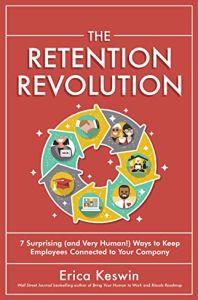
The Retention Revolution
7 Surprising (and Very Human!) Ways to Keep Employees Connected to Your Company
Recommendation
Today’s workplace sometimes seems to feature a revolving door for employees moving from company to company. If you seek a cure for excess turnover, author Erica Keswin offers a human-centric approach to keeping employees invested in your company. Her seven strategic insights provide a refreshing perspective on the power of genuine connection in the modern workplace. Keswin’s compelling stories, real-world examples and ready-to-implement steps are designed to transform your retention rates. Whether you’re a seasoned leader or just starting, her manual can help you cultivate deeper, more meaningful bonds with your team.
Summary
About the Author
Author Erica Keswin is a business strategist with over 25 years of experience.
By the same author
Learners who read this summary also read
Related Skills



























Comment on this summary